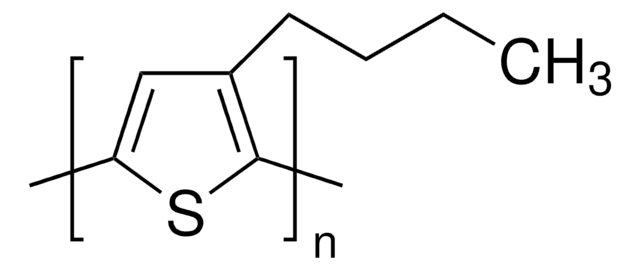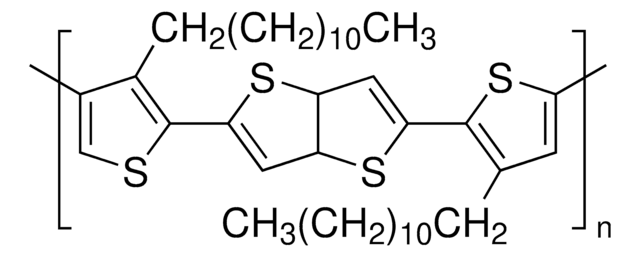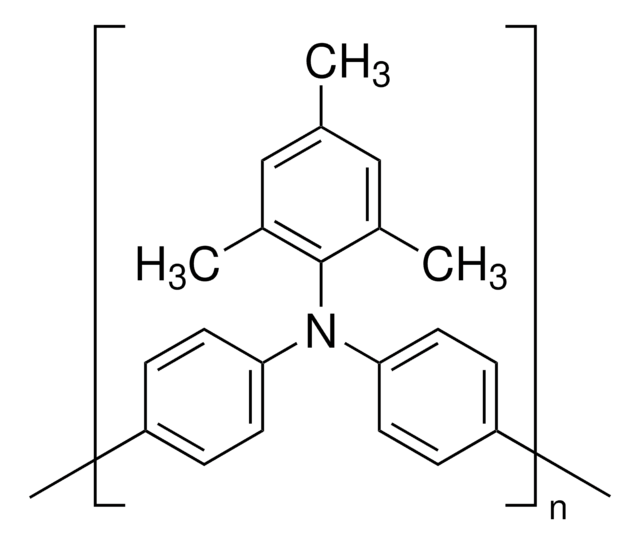682780
Poly(3-dodecylthiophene-2,5-diyl)
electronic grade, 99.995% trace metals basis, average Mw ~27,000
Synonym(s):
P3DDT
About This Item
Recommended Products
grade
electronic grade
description
Band gap: 1.74 eV
regioregular
Assay
99.995% trace metals basis
form
solid
mol wt
average Mw ~27,000
transition temp
Tm (DSC) 165.6 °C (peak)
Orbital energy
HOMO -5.29 eV
LUMO -3.55 eV
OPV Device Performance
ITO/PEDOT:PSS/P3DDT/PC61BM (1:3)/LiF/Al
semiconductor properties
P-type (mobility=10−4 - 10−1 cm2/V·s)
Looking for similar products? Visit Product Comparison Guide
General description
Application
Rechargeable battery electrodes, electrochromic devices, chemical and optical sensors, light-emitting diodes, microelectrical amplifiers, field-effect transistors and non-linear optical materials.
Storage Class Code
11 - Combustible Solids
WGK
WGK 3
Flash Point(F)
Not applicable
Flash Point(C)
Not applicable
Personal Protective Equipment
Choose from one of the most recent versions:
Certificates of Analysis (COA)
Don't see the Right Version?
If you require a particular version, you can look up a specific certificate by the Lot or Batch number.
Already Own This Product?
Find documentation for the products that you have recently purchased in the Document Library.
Articles
The application of conducting polymers at the interface with biology is an exciting new trend in organic electronics research.
Novel Graphene‑Based Nanostructures Production, Functionalization, and Engineering
Professors Tokito and Takeda share design principles and optimization protocols for organic electronic devices, focusing on flexibility and low cost.
Professor Chen (Nankai University, China) and his team explain the strategies behind their recent record-breaking organic solar cells, reaching a power conversion efficiency of 17.3%.
Our team of scientists has experience in all areas of research including Life Science, Material Science, Chemical Synthesis, Chromatography, Analytical and many others.
Contact Technical Service
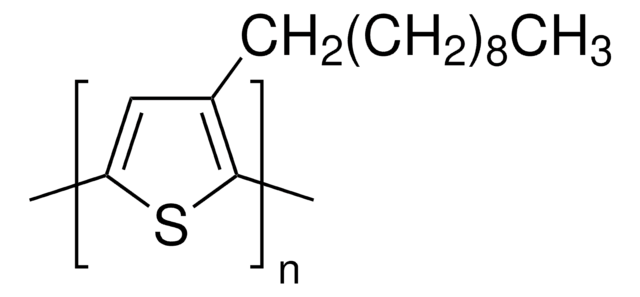
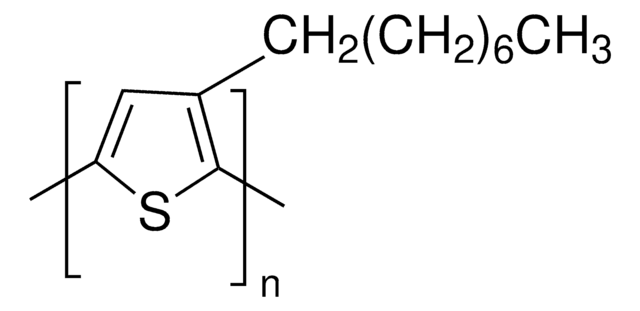
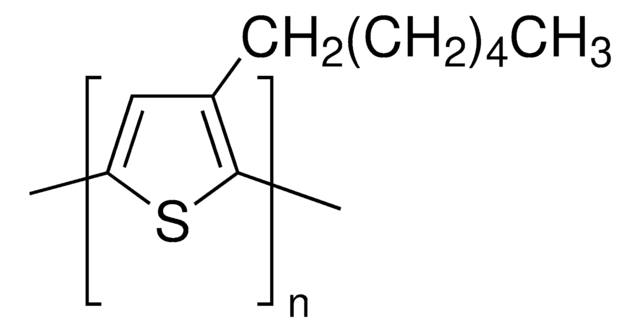
![Poly[2-methoxy-5-(2-ethylhexyloxy)-1,4-phenylenevinylene] average Mn 40,000-70,000](/deepweb/assets/sigmaaldrich/product/structures/344/488/b8f8179d-3970-4deb-a754-adda88cdb36f/640/b8f8179d-3970-4deb-a754-adda88cdb36f.png)
